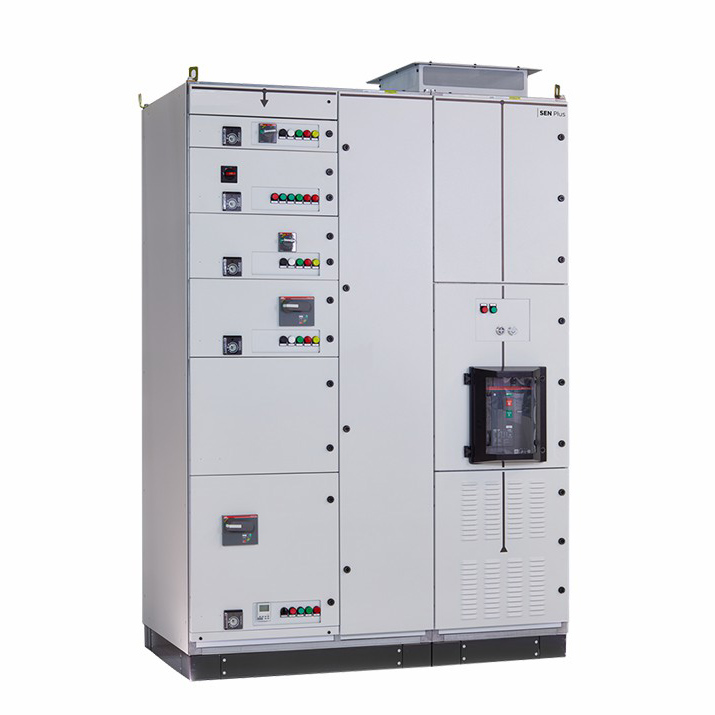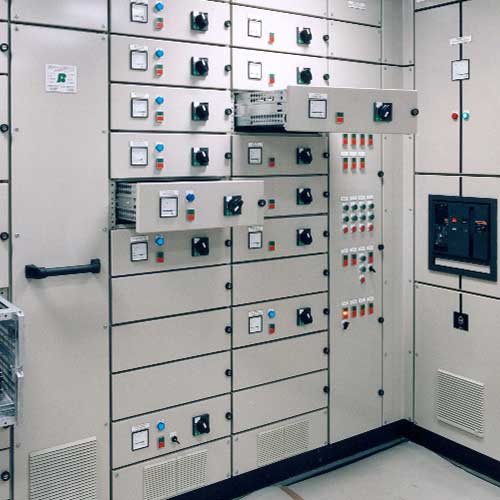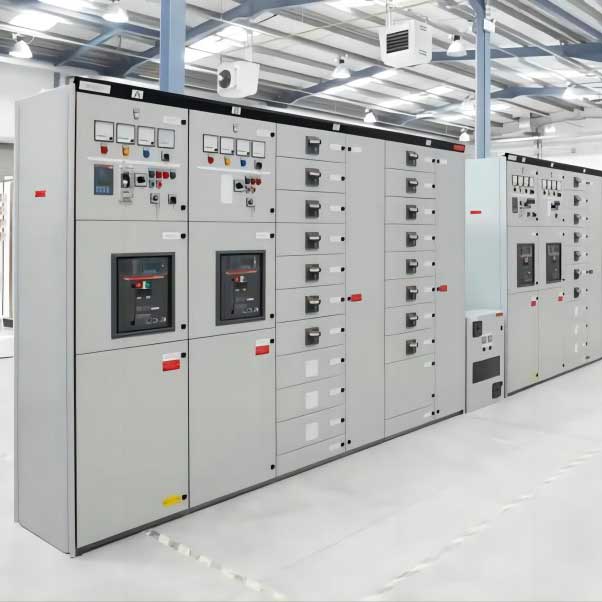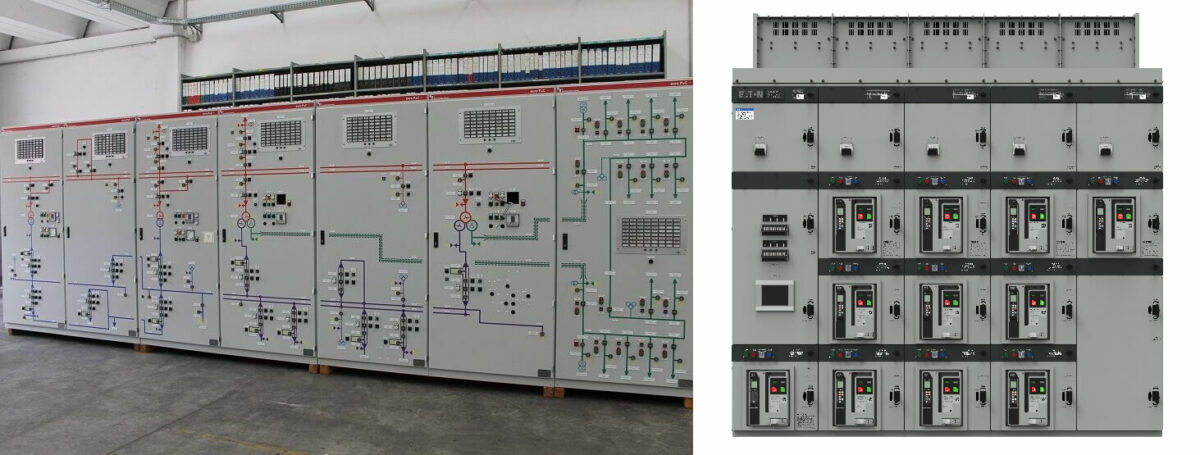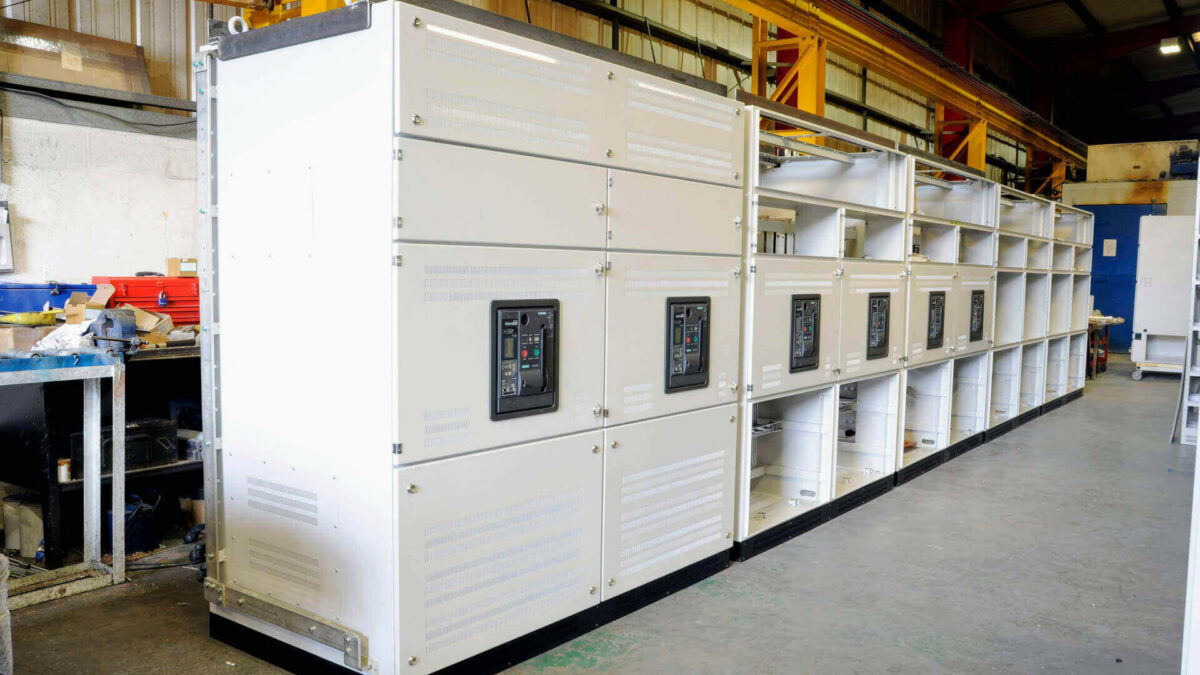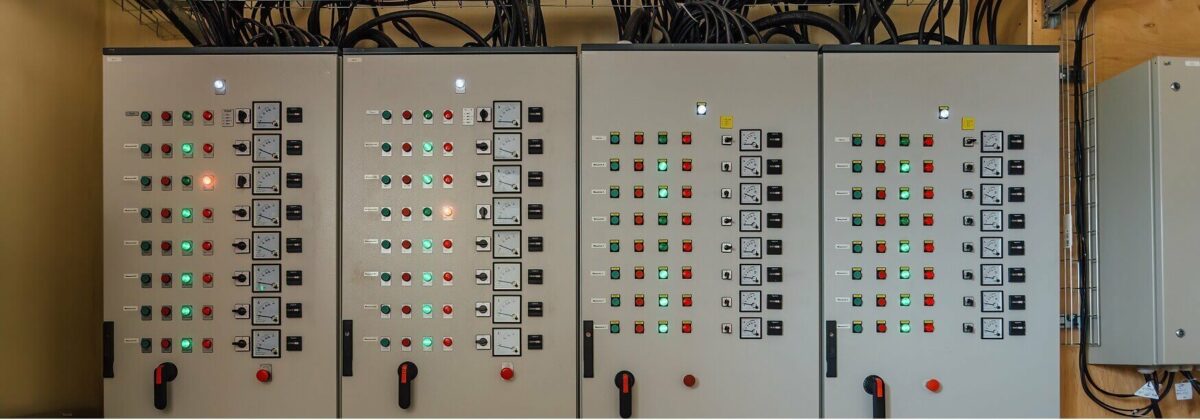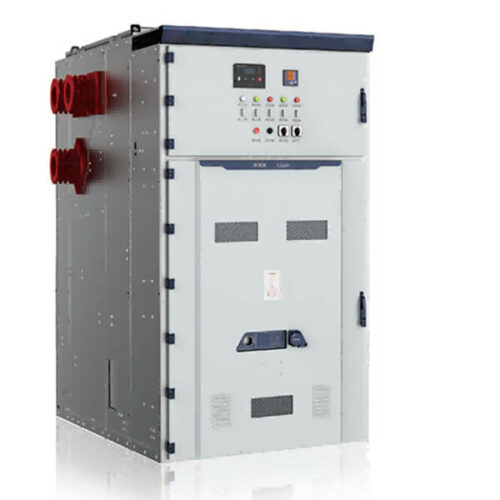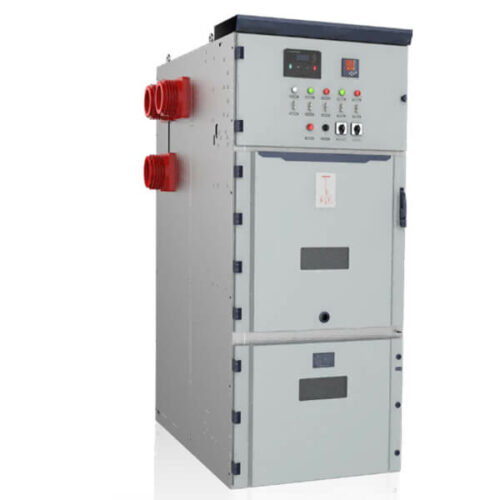Our Low Voltage Switchgear is a high-quality electrical distribution and control device designed to provide reliable and safe power distribution and control in low voltage systems. It is suitable for a wide range of industrial, commercial, and residential applications.
Low Voltage Switchgear
Description
| Parameter | Specification |
| Rated voltage | 400V, 690V |
| Rated current | Up to 6300A |
| Short-circuit breaking capacity | Up to 100 kA |
| Short-time withstand current | Up to 80 kA for 1 second |
| Operating sequence | O-0.3 s-CO-3 min-CO |
| Degree of protection | IP4X, IP5X, or IP54 |
| Busbar system type | Single busbar, double busbar, or duplex |
| Circuit breaker type | MCCB, ACB, or MCB |
| Control voltage | 110V AC or 220V AC |
| Auxiliary contacts | Up to 16 NO/NC |
| Communication | Modbus, Profibus, DeviceNet, Ethernet |
| Enclosure | Metal-clad or metal-enclosed |
| Arc resistance | IAC A-FLR 31.5 kA, 1 second |
| Standards | IEC, ANSI, UL, CSA, GB, etc. |
Feature
Our Low Voltage Switchgear has several features and benefits that make it an excellent choice for your low voltage power distribution and control needs:
- High-quality circuit breakers that provide reliable and safe protection against short circuits and overloads.
- Flexible and customizable busbar system types that provide efficient power distribution and control.
- Easy-to-operate and reliable control systems that enable seamless integration with different automation and control systems.
- Various degrees of protection options provide reliable protection against environmental factors such as dust, water, and other contaminants.
- Robust and durable enclosure options that provide reliable protection against harsh environmental conditions.
- Multiple communication options enable remote monitoring and control, reducing the need for manual intervention.
- Compliance with various international standards that ensure the highest levels of safety, quality, and reliability.
Overall, our Low Voltage Switchgear is a reliable, efficient, and cost-effective solution for low voltage power distribution and control in a wide range of industrial, commercial, and residential applications.
FAQ Guide
Today there is a wide variety of low-voltage switchgear options available to suit different applications. In order to make an informed decision, customers must be familiar with this type of switchgear. That’s where this easy-to-read guide comes in, helping you learn about low-voltage electrical switchgear in a non-technical way.
1. What is a low-voltage switchgear?
Low voltage or LV switchgear is a device used to centrally monitor and control low voltage power systems. These are systems rated at 1000 volts and below. Low-voltage switchgear is commonly used in residential, commercial, industrial, and even utility applications.
It is also the most installed. According to a report by Global Market Insights, the global low-voltage switchgear market is expected to grow from USD 67 billion in 2022 to USD 136 billion in 2030, at a CAGR of 8% in the forecast year.
This is a significant market growth attributable to the increasing demand for efficient power distribution in various end-use industries. Low voltage switchgear is available in various voltage classes up to 1000 VAC (up to 1500 VDC) and current classes up to 6000A.
2. Low-voltage switchgear function
From the definition of low-voltage switchgear, it is clear that this equipment is used for a variety of purposes. One of its important functions is to protect the electrical system from overload or short circuits. This is accomplished through the use of circuit breakers, which automatically trip or open when a fault is detected.
In addition to protecting against electrical faults, low-voltage switchgear, and control gear components are used to control and regulate power in electrical systems.
Another function of low-voltage switchgear is to provide a safe and convenient way to disconnect power to electrical equipment or systems. This is achieved by using a disconnect switch, which can be manually operated or remotely controlled.
3. Low-voltage switchgear design
Low-voltage switchgear manufacturers use various design guidelines depending on the type of application and customer requirements. The most typical design is that the circuit breaker is at the bottom, the bus bar is in the middle, and the cable compartment is at the rear. In some applications, the cable compartment is located next to the circuit breaker compartment and can be accessed from the front.
That said, low-voltage switchgear designs follow a common configuration where the assembly consists of the following 3 main parts:
- Circuit breaker compartment
- Bus compartment
- Cable room
1) Broken Rod Compartment
The circuit breaker compartment is where the circuit breakers are located, arranged in compartments. Typically, each circuit breaker will be housed in a compartment separate from the other circuit breakers. Molded case circuit breaker for low voltage switchgear, molded case circuit breaker
2) Busbar room
Located in the middle of the low-voltage switchgear assembly is the busbar compartment. This is part of the system that transmits and distributes power from the input cables to various circuit devices. Bus bars are usually made of tinned copper or silver and are either vertical or horizontal.
3) Cable room
The cable compartment is where the cables are terminated. In most types of LV switchgear, this compartment is located at the rear and has a door for access. In some other cases, it is located and accessible from the front. This design makes it possible to install the low-voltage switchgear structure against the wall.
4. Low voltage switching elements
Low-voltage switchgear is composed of various electrical equipment. These are usually enclosed in a grounded metal enclosure which may or may not include a draw-out cabinet. Read below to learn more about these sections.
Low-voltage switchgear assemblies include switching, interruption, and control equipment used to manage the distribution of low-voltage power. The main types of components in low-voltage switchgear are:
- Circuit breaker – Protects against overloads and short circuits
- Disconnect switches – these are used to disconnect power to electrical equipment or systems
- Transformers – These are used to convert between different voltage levels
- Fuses – Low voltage switchgear will also contain fuses for protection against overcurrent
- Relays – These are used to monitor and control the operation of circuit breakers and other electrical equipment. as an overvoltage sensor
- Isolators – Also known as isolators, these devices disconnect parts of the electrical system from the power supply
- Busbars – metallic conductors used to transmit and distribute power within the switchgear enclosure
- Insulation – provides electrical insulation between live or current-carrying parts and other parts
There are several other low-voltage switchgear components such as switchgear and metering devices. The list above covers the most common ones.
5. Low-voltage switchgear ratings and standards
Various industry standards regulate the production of low-voltage switchgear products. These include safety requirements, rated voltage or current, etc. Standard low switchgear ratings are listed below
- Maximum voltage up to 635 V
- Continuous current up to 10 000A
- Short-time withstand current up to 100 000A, 30 cycles
- Short circuits withstand current up to 200 000A
- Power frequency 50 and 60Hz
- Insulation class up to 2.2 kV
These ratings are based on various standards and organizations including ANSI/IEE C37.20.1, ANSI/IEE C73.20.7, UL1558, and UL1066. Other low-voltage switchgear standards established by manufacturers based on their products and manufacturing methods include NEMA and ISO standards.
6. Low voltage switchgear type
Different switchgear is used in different environments and applications. Low-voltage switchgear can be divided into various types, depending on the application and voltage class. These include switchgear for indoor and outdoor spaces. The most common types of low-voltage switchgear are:
- Metal-enclosed low-voltage switchgear.
- Metal armored low voltage switchgear
- Indoor low-voltage switchgear
- Outdoor low-voltage switchgear
- Air-insulated low-voltage switchgear
- Gas-insulated low-voltage switchgear
1) Metal-enclosed low-voltage switchgear
Metal-enclosed low-voltage switchgear contains circuit breakers, busbars, and other components in an enclosed steel cabinet without the need for a fence. These systems are typically used in indoor applications with voltages up to 1000 V AC and up to 1500 V DC.
2) Metal composite low-voltage switchgear
Metal-clad low-voltage switchgear is similar to metal-enclosed switchgear but with additional partition structures. This means that the different components are housed in separate metal housings. This low-voltage switchgear design increases operator safety while also allowing easy maintenance of the equipment.
3) Indoor low-voltage switchgear
Indoor low-voltage switchgear is designed for use in buildings or facilities where space is limited. These systems typically contain circuit breakers and busbars in metal cabinets or enclosures for indoor applications. Indoor low-voltage switchgear is largely immune to environmental influences but can be affected by humidity and other indoor conditions.
4) Outdoor low-voltage switchgear
Outdoor low-voltage switchgear is designed for outdoor harsh environments such as extreme temperatures, high humidity, or wet conditions. These systems are usually enclosed in galvanized steel cabinets or enclosures and contain components such as circuit breakers, disconnect switches, fuses, and surge arresters.
7. Low-voltage switchgear maintenance
Switchgear must operate correctly or the safe and reliable operation of electrical systems and equipment is at risk. That’s why its maintenance is so important. By keeping your switchgear in good condition, you can avoid costly repairs and downtime. Low switchgear maintenance involves many activities and different time frames.
Before we look at these maintenance activities, let’s take a look at what can cause your switchgear installation to age or become damaged. Your low voltage switchgear components are subject to various conditions such as:
- Relative humidity or water intrusion
- Extremely hot
- Salt conditions
- Shock
- Corrosive environment
- Dust
- Current harmonics
- Load voltage
1) Low-pressure preventive maintenance
It is recommended to ensure preventive and conditional switchgear maintenance and to keep a formal document of planned and completed activities. Low-Switching Equipment Preventive Maintenance refers to activities performed on a regular basis to avoid problems and keep equipment in good condition. The main maintenance activities for low-voltage switchgear are:
- Visual inspection
- Wipe and clean
- Tight connection
- Parts replacement
- Function test
- Measurement and Monitoring
These activities should be performed according to the manufacturer’s recommendations. Low-voltage switchgear manufacturers typically also provide maintenance intervals for their products, ranging from months to years.
8. Low-voltage switchgear selection guide
With so many variables to consider, low-voltage switchgear selection is increasingly software-based. Consider different combinations and model them to arrive at an optimal solution. Having said that, the following low-voltage switchgear specifications and other needs must be considered:
- System voltage
- Current rating
- Short-circuit withstand capacity of switchgear
- Environmental conditions such as temperature and humidity
- Amount of space available for installation
- The required degree of protection against electrical hazards
Other factors, such as ease of operation and maintenance, specific low-voltage switchgear price, and lead time, may also influence the choice of low-voltage switchgear. In general, switchgear must meet these requirements.
- Provides acceptable performance under normal conditions
- Capable of safely interrupting all anticipated short-circuit currents, up to the maximum values that may occur in the system
- Withstand temporarily and without damage all prospective short-circuit currents that might flow through it while remaining closed
- Limits the voltage rise on its terminals to a value that will not cause hazard or damage to any equipment connected to it
- Comply with electrical equipment and safety regulations in your area
It is also important that low-voltage switchgear can operate safely and reliably under all conditions, including conditions where the system operates abnormally.
9. Conclusion
With the increasing need for efficient power distribution and management in all types of facilities, the need for low-voltage electrical switchgear has never been greater. On the other hand, manufacturers are designing increasingly compact and efficient products to meet this demand. As technology advances, the capabilities of low-voltage switchgear continue to increase. This is good news for consumers as it provides more choice and flexibility when choosing products.
